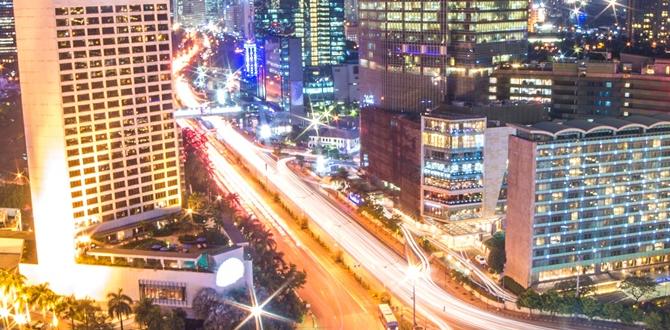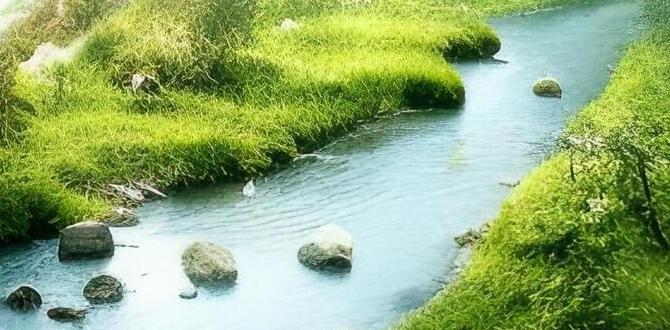Agra One Week Itinerary: Your Essential Guide: Plan a unforgettable week in Agra with this easy-to-follow guide, covering iconic sights, local experiences, and practical tips for a comfortable journey.
Planning a trip to Agra can feel a bit overwhelming, especially when you want to make the most of your time. Many travelers worry about missing out on key attractions or getting lost in the hustle and bustle. But don’t worry, with a little bit of planning, you can have an amazing and stress-free week exploring the magic of the Taj Mahal and beyond.
This guide is designed to help you create your perfect Agra adventure, ensuring you experience the best of what this historic city has to offer. Get ready for an incredible journey!
Agra One Week Itinerary: Your Essential Guide
Welcome to Agra, the city of the Taj Mahal! A week in Agra might seem like a lot for some, but it offers a wonderful opportunity to truly soak in the history, culture, and architectural marvels at a comfortable pace. This itinerary is designed for a relaxed yet comprehensive exploration, perfect for first-time visitors, families, and anyone looking to delve deeper than just the surface.
We’ll cover the iconic landmarks, hidden gems, local flavors, and practical tips to ensure your journey is smooth and memorable. Agra is more than just the Taj Mahal; it’s a city steeped in Mughal history, vibrant bazaars, and unique culinary experiences. This one-week plan ensures you see all the essentials without feeling rushed, leaving room for spontaneous discoveries and relaxation. Let’s embark on this incredible journey together!
Day 1: Arrival and the Majesty of the Taj Mahal
Your Agra adventure begins! After arriving and checking into your hotel, it’s time for one of the most anticipated moments: your first glimpse of the Taj Mahal.
Morning: Arrival and Check-in
Arrive in Agra, typically by train or by road from Delhi or other nearby cities. Head to your pre-booked accommodation. Whether you choose a luxurious heritage hotel or a comfortable budget-friendly option, ensure it’s centrally located for ease of travel. Take some time to unpack and refresh.
Afternoon: The Iconic Taj Mahal
Taj Mahal Visiting Tips:
- Best Time: Aim for the late afternoon to witness the changing colors of the marble as the sun begins to set. This also allows for more pleasant temperatures.
- Tickets: Purchase tickets online in advance from the Archaeological Survey of India (ASI) website to skip queues.
- Entry Gates: There are three entry gates: the East, West, and South gates. The East and West gates are most popular for tourists.
- Security: Be aware of strict security checks. Only a few items are allowed inside (e.g., mobile phone, camera, water bottle, small bag). Leave larger bags and prohibited items at your hotel.
- Dress Code: While there’s no strict dress code, modest attire is appreciated. Comfortable walking shoes are a must.
Spend several hours marveling at the Taj Mahal. Explore the gardens, the mosque, and the guesthouse, and take your time to appreciate the intricate details of the mausoleum. The sheer scale and beauty are breathtaking.
Evening: Sunset Views and Local Dinner
For a different perspective, head to Mehtab Bagh (Moonlight Garden) across the Yamuna River for stunning sunset views of the Taj Mahal. Afterwards, enjoy your first taste of Agra’s cuisine at a local restaurant. Try Mughlai dishes like Petha (a famous sweet) or Dal Moth.
Day 2: Agra’s Fortress and Historical Depth
Day two is dedicated to exploring Agra Fort, a UNESCO World Heritage Site that was once the main residence of the Mughal emperors.
Morning: Agra Fort
Agra Fort is a massive red sandstone complex that served as the seat of power for the Mughal Empire. It’s a city within a city, with palaces, audience halls, and mosques. Key areas to explore include:
- Diwan-i-Aam: The Hall of Public Audience.
- Diwan-i-Khas: The Hall of Private Audience, where precious jewels were once displayed.
- Jahangir Palace: A fine example of Mughal architecture.
- Musamman Burj: An octagonal tower from which Emperor Shah Jahan is said to have gazed at the Taj Mahal while imprisoned.
Allow at least 3-4 hours to fully appreciate the fort’s grandeur and history.
Afternoon: Itmad-ud-Daulah’s Tomb (The Baby Taj)
Often overlooked in favor of the Taj Mahal, Itmad-ud-Daulah’s Tomb is a masterpiece of Mughal architecture. This exquisite marble mausoleum is considered a precursor to the Taj Mahal, with its intricate inlay work (pietra dura) and delicate latticework. It’s a more serene experience, offering a closer look at the craftsmanship.
Evening: Shopping and Cultural Experience
Agra is known for its marble inlay work, leather goods, and textiles. Explore local markets like Kinari Bazaar or Subhash Bazaar. You can find beautiful souvenirs and get a feel for local life. Consider attending a Mohabbat-e-Taj show in the evening for a dramatic reenactment of the Taj Mahal’s love story (check show timings and availability).
Day 3: A Day Trip to Fatehpur Sikri
Today, we venture outside the city to explore another magnificent UNESCO World Heritage Site: Fatehpur Sikri.
Morning: Journey to Fatehpur Sikri
Fatehpur Sikri is located about 40 km southwest of Agra. You can hire a taxi or join a guided tour for this excursion. The journey takes approximately 1 to 1.5 hours.
Late Morning and Afternoon: Exploring Fatehpur Sikri
This stunning “deserted city” was built by Emperor Akbar as his capital in the late 16th century but was abandoned shortly after due to water scarcity. It’s a marvel of Mughal planning and architecture, remarkably well-preserved.
- Buland Darwaza: The imposing “Gate of Magnificence,” one of the highest gateways in the world.
- Jama Masjid: A beautiful mosque.
- Tomb of Salim Chishti: A serene white marble tomb.
- Panch Mahal: A five-story pavilion offering panoramic views.
- Jodha Bai’s Palace: A representation of Hindu and Mughal architectural styles.
Allocate at least 3-4 hours to explore Fatehpur Sikri thoroughly. Wear comfortable shoes, as there is a lot of walking involved. Carry water, and consider hiring a local guide at the site to understand its rich history.
Evening: Return to Agra and Leisure
Upon returning to Agra, you’ll likely be tired. Enjoy a relaxed evening. Perhaps try a restaurant you haven’t visited yet, or simply unwind at your hotel.
Day 4: Sikh Heritage and Local Life
This day focuses on uncovering some of the lesser-known spiritual and cultural aspects of Agra.
Morning: Gurudwara Guru Ka Tal
Visit Gurudwara Guru Ka Tal, a significant Sikh pilgrimage site. This historical gurudwara is known for its impressive architecture and serene atmosphere, offering a peaceful respite from the city bustle. It is also notable for its role in Mughal history, having been a place of refuge and later a prison. Many travelers find it a deeply moving and spiritually uplifting place.
Afternoon: Agra Bear Rescue Facility
For a different kind of experience, visit the Agra Bear Rescue Facility, run by Wildlife SOS. This sanctuary rescues and rehabilitates sloth bears that have been victims of the cruel “dancing bear” practice. It’s an opportunity to see these magnificent animals in a safe and natural environment and learn about conservation efforts. This is often a highlight for families and animal lovers.
Important Information:
- Visiting Hours: Check their website for current visiting hours and booking procedures.
- Tours: Tours are guided and offer insight into the bears’ stories and care.
- Donations: Consider making a donation to support their vital work.
evening: Culinary Exploration
Dive deeper into Agra’s food scene. Explore local eateries for authentic street food like Jalebi, Kachori, and Samosas. For dinner, consider a restaurant offering traditional North Indian thalis or explore some of Agra’s unique Petha variations.
Day 5: Art, Crafts, and Panoramic Views
Today is about appreciating the artistic heritage of Agra and enjoying some leisurely exploration.
Morning: Shopping for Crafts and Souvenirs
Agra is famous for its marble inlay craft, a skill brought from Persia by artisans. Visit workshops to see artisans at work, creating intricate designs on marble. You can buy beautiful souvenir items like small boxes, coasters, or decorative plates. Remember to haggle respectfully if you’re shopping in the bazaars.
Other popular crafts include:
- Leather footwear
- Zari embroidered fabrics
- Handicrafts made from metal and wood
Afternoon: AgraKhas Art Gallery and Museum
Immerse yourself in local art and history at the AgraKhas Art Gallery and Museum. This venue often showcases traditional Indian art, miniature paintings, and local handicrafts, providing insights into the region’s artistic legacy. It’s a great way to connect with the cultural heritage of Agra.
Late Afternoon: Raj Dhani Viewpoint
For a unique and often overlooked perspective, visit Raj Dhani. This elevated spot offers a different angle to capture photographs of the Taj Mahal, especially during sunset, and provides a panoramic view of the Yamuna River and the city. It’s a less crowded alternative to Mehtab Bagh.
Evening: Cooking Class or a Relaxed Dinner
Consider joining a local cooking class to learn how to make popular Indian dishes. It’s a fun and interactive way to experience the culture. Alternatively, opt for a relaxed dinner at a rooftop restaurant offering city views.
<h2 id=”day-6-exploring- Sikandra-and-relaxing}{Day 6: Exploring Sikandra and Relaxing
Our penultimate day offers a visit to another significant Mughal monument and some time for relaxation or revisiting favorites.
Morning: Sikandra – Tomb of Akbar
Head to Sikandra, the tomb of Emperor Akbar the Great, located about 10 km from the city center of Agra. Akbar himself planned his own mausoleum, and it is an impressive blend of architectural styles, showcasing Hindu and Islamic influences. The tomb is set within a large garden and is guarded by four monumental gateways. The actual tomb chamber is in a crypt below.
Key Features:
- The unique blend of architectural styles.
- The serene and expansive gardens.
- The presence of numerous langur monkeys often found within the grounds.
Allow about 2-3 hours for your visit.
Afternoon: Leisure, Revisit, or Local Exploration
This afternoon is flexible. You might want to revisit a favorite spot, perhaps the Taj Mahal at a different time of day, or spend more time shopping for last-minute souvenirs. Alternatively, explore a part of the city you haven’t seen yet, or simply relax at your hotel. For those who appreciate local markets, a visit to Sadar Bazaar can be interesting for its variety of goods.
Evening: Farewell Dinner
Enjoy a special farewell dinner to celebrate your week in Agra. Choose a restaurant with excellent reviews, perhaps one offering a fine dining experience or a charming ambiance. Savor the flavors of Mughlai cuisine one last time.
Frequently Asked Questions
How many days are enough for Agra?
For a thorough exploration, including the main sights and some local experiences, 3 to 4 days are generally ideal. However, if you wish to explore at a more relaxed pace, visit nearby attractions, or immerse yourself in the local culture, a 5 to 7-day itinerary allows for a comprehensive and enjoyable experience.
What is the best time to visit Agra?
The best time to visit Agra is during the cooler months, from October to March. The weather is pleasant, making it ideal for sightseeing. Avoid the peak summer months (April to June) when temperatures can soar, and the monsoon season (July to September) while beautiful, can sometimes disrupt travel plans.
Is Agra safe for solo travelers?
Agra is generally safe for solo travelers, but like any popular tourist destination, it’s important to take precautions. Stick to well-lit areas at night, be aware of your surroundings, and avoid displaying excessive wealth. Research reputable accommodations and tours, and trust your instincts. Women traveling solo should be particularly mindful of dressing modestly and avoiding unnecessary attention.
What are the must-see attractions in Agra?
The absolute must-sees are the Taj Mahal and Agra Fort. Beyond these iconic landmarks, consider visiting Fatehpur Sikri (a UNESCO World Heritage Site a short drive from Agra), Itmad-ud-Daulah’s Tomb (often called the “Baby Taj”), and Mehtab Bagh for sunset views of the Taj Mahal. Exploring local markets like Kinari Bazaar is also a great experience.
How can I travel around Agra?
Within Agra, you can use auto-rickshaws, cycle-rickshaws, taxis, and ride-sharing apps like Ola and Uber. For longer distances to nearby attractions like Fatehpur Sikri, hiring a private car with a driver is a convenient option. Many centrally located attractions are also walkable.
What kind of clothing is appropriate for visiting religious sites in Agra?
When visiting religious sites, it’s important to dress modestly. This means covering your shoulders and knees. Many sites may require you to remove your shoes, so comfortable footwear that’s easy to slip on and off is recommended. Scarves can be handy for covering heads if required or to provide modesty.
Are there any special considerations for families traveling with children?
Yes, carrying essentials like water, snacks, and personal care items, including baby wipes and diapers if needed, is crucial. Many historical sites can involve a lot of walking, so consider a stroller or carrier for younger children. Plan for breaks and incorporate activities that might appeal to kids, like visiting the Taj Nature Walk or exploring local artisan villages.
Staying hydrated is key, especially during warmer months. For parents looking for extra comfort and security, discreet travel-friendly adult or child diapers can offer peace of mind during long days of exploration or travel.




